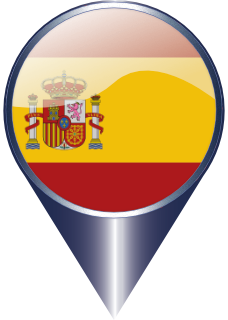The Royal Venaria it is a large "permanent cultural project" that offers opportunities for knowledge, emotions and multiple experiences
The Venaria Reale, a grandiose complex on the outskirts of Turin with 80,000 square meters of monumental palace building and 60 hectares of gardens, assets adjacent to the seventeenth-century historic center of Venaria and the 3,000 fenced hectares of the Mandria Park, is a masterpiece of architecture and of the landscape, declared a World Heritage Site by UNESCO in 1997 and opened to the public in 2007 after having been the most important restoration site in Europe for cultural heritage.
The monumental building boasts some of the highest expressions of universal baroque: the enchanting scenery of the Sala di Diana designed by Amedeo di Castellamonte, the solemnity of the Galleria Grande and the Chapel of Sant'Uberto with the immense complex of the Juvarriane Stables, eighteenth-century works by Filippo Juvarra, the sumptuous decorations, the spectacular Deer Fountain in the Court of Honor represent the ideal setting of the Theater of History and Magnificence, the exhibition itinerary dedicated to the Savoys which accompanies the visitor along almost 2,000 metres, between the basement and noble floor of the Palace.
The Royal Palace of Venaria contains within it a long tour itinerary through its majestic rooms, various exhibition centers for temporary exhibitions and important works of contemporary art.
The Venaria Reale is a Court of contemporaries open to all, which aims to be the discovery of multiple experiences, a journey into the "Palace of Italy" where, focusing on the valorisation of our historical, landscape and gastronomic heritage, one can find "royalty and pleasure of living."
La Venaria Reale, a grandiose complex on the outskirts of Turin with 80,000 square meters of monumental palace building and 60 hectares of gardens, assets adjacent to the seventeenth-century historic center of Venaria and the 3,000 fenced hectares of La Mandria Park, is a masterpiece of architecture and of the landscape.
Declared a World Heritage Site by UNESCO in 1997, it opened to the public in 2007 after being the most important restoration site in Europe for cultural heritage.
The monumental building boasts some of the highest expressions of universal baroque: the enchanting scenery of the Sala di Diana designed by Amedeo di Castellamonte, the solemnity of the Galleria Grande and the Chapel of Sant'Uberto with the immense complex of the Juvarriane Stables, eighteenth-century works by Filippo Juvarra, the sumptuous decorations, the spectacular Deer Fountain in the Court of Honor represent the ideal setting of the Theater of History and Magnificence, the exhibition itinerary dedicated to the Savoys which accompanies the visitor along almost 2,000 metres, between the basement and noble floor of the Palace.
Brief History of the Royal Palace of Venaria
1658-1699: the pleasure and hunting residence
In the mid-17th century, Duke Carlo Emanuele II of Savoy and Duchess Maria Giovanna Battista of Savoy Nemours decided to build a new jewel to add to the crown of residences surrounding Turin. The task of designing a place intended for pleasure and hunting was assigned to the court architect Amedeo di Castellamonte. The project, of great scenographic impact, includes the palace, the park, the hunting woods and an entire village. The residence was created together with the Italian gardens and a play of sculptures, and then again: fountains, spectacular staircases and terraces on multiple levels, a high park on the palace floor and a low park on the Peschiera floor. The entire composition is made unique by the perspective line that cuts through the Borgo and continues into the heart of the Palace along the canal that connects the Fountain of Hercules to the Temple of Diana.
1699-1798: the Palace of the Kings
Starting from 1699, the architect Michelangelo Garove designed the Palace complex again to give it a more grandiose character, according to the ambitions of Vittorio Amedeo II. The Gardens are completely redesigned in the French style, with perspectives open to the infinite and a new breath, as dictated by the taste of the greatest European court, Versailles. Meanwhile, the duke becomes king: in 1716 he entrusts the expansion project to Filippo Juvarra, who with his Great Gallery, the Chapel of Sant'Uberto, the Citroniera and the Scuderia, brings the Palace among the Baroque masterpieces. In 1739 Carlo Emanuele III commissioned Benedetto Alfieri to give unity to the complex with a system of communication tunnels and service areas, including the stables and the covered riding school. The Palace continued its court life during the reign of Vittorio Amedeo III and Carlo Emanuele IV, until the decline of the Ancient Regime.
1798-1999: the military period and decline
The transformation of the Palace into a barracks began at the beginning of the 19th century after the arrival of Napoleon, the escape and subsequent return of the Kings. The design of the Gardens disappeared, leveled out into a parade ground for military exercises. Horses, cannons and muskets replace flowerbeds, fountains and sculptures. The complex features the uniforms of the Wars of Independence and those of the Italian army during the First and Second World Wars. Once the military garrison was removed, the Palace became prey to vandals, who stripped the palace of all reusable materials. A period of oblivion redeemed by the generous attempts of the community and the Superintendency of Architectural Heritage to avoid the irreparable.
1999-2007: the restoration site
The restoration of the Palace and Gardens is part of the La Venaria Reale Project, which also includes the recovery of the Borgo Antico and the Parco della Mandria. Launched in 1999 by the Ministry of Cultural Heritage and Activities and the Piedmont Region, with the support of the European Union and the Ministry of Economy and the collaboration of the Province of Turin, the Municipality of Venaria and the Municipality of Turin, the project reports frescoes, decorations and archaeological evidence brought to light through cutting-edge intervention methodologies. It is the largest conservation work of a cultural asset ever carried out in Europe. 100,000 square meters of the surface of the entire complex have been restored, 9,500 square meters of stuccos recovered, 1,000 of frescoes brought to light. There are 50 hectares of Gardens that can already be visited, 200,000 new plantings, 11 million liters of water in the Peschiera, 4,500 square meters of the Juvarriane Stables. The redevelopment of an entire territory on the outskirts of Turin is completed.
since 2007: the rebirth
The inauguration - on 12 October 2007 - returns the Palace and its Gardens to the public. The architecture, history, landscape, modern artistic languages, masterpieces of art and a spectacular and evocative display on the lifestyles of the seventeenth and eighteenth centuries offer contemporaries the splendor of a great European court. Through the visit itinerary, the exhibitions, shows, concerts, conferences and food and wine pleasures, royalty and the pleasure of living have returned home to the Royal Palace of Venaria.










Leave a Reply